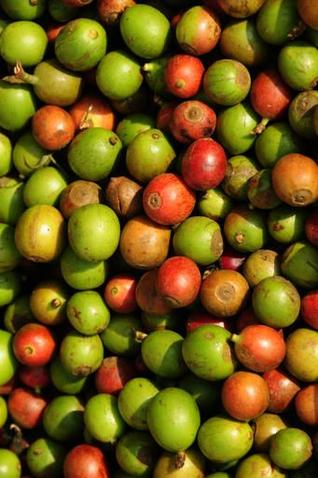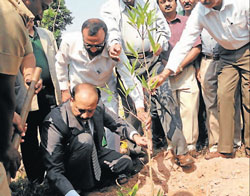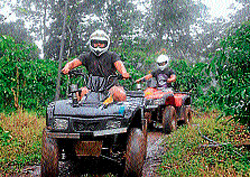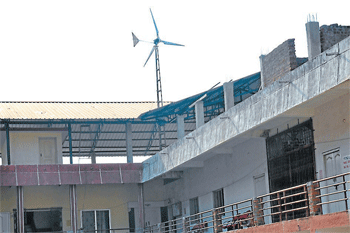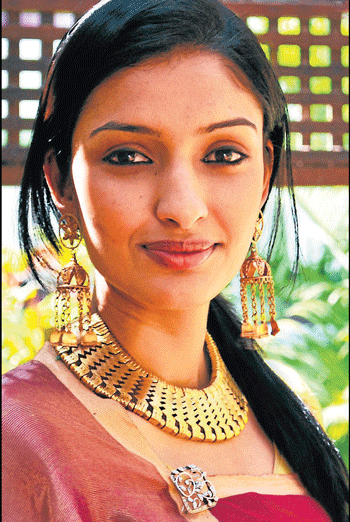Coorg – Where a gunshot signifies the beginning and end of life. We walk you through the fascinating traditions of these hill people
Dshoom! The loud gunshot made me get up with a jerk. Half-asleep under the quilt, I was a little confused about where I was. My children, who were fast asleep too, got up with a loud scream that made me realise we were holidaying at an estate in Coorg. We rushed out to see what was happening and were surprised to see our host Arun Appachu holding a rifle and sporting a big smile.
A bit shaken — you couldn’t entirely blame it on the cold morning weather — I was even more puzzled when he offered me sweets. “For what?” I exclaimed.
“There is a new arrival in my family.” His grin grew wider. “But what is that gunshot all about?” I continued my investigation, unable to share his moment of happiness as my four-year-old daughter clung to me in fear.
“Oh, that is our way of announcing a child’s birth in our family. My sister gave birth to a healthy baby this morning,” he said.
CULTURE POINT
“Interesting,” I murmured, and saw him off. After sometime, the journalist in me led me to Dream Path, his cottage, to learn more about their culture. At his home, there was a stream of visitors and continuous phone calls congratulating the family. Arun and his wife Kaveri understood my puzzlement, and started explaining the Coorgi culture. “In those days,” he began, “there was absolutely no way of communication, especially in a hilly place such as Coorg. The houses were scattered and it took a very long time to go from one house to another. People started using rifles to announce good and bad happenings in their families: One shot for a birth and two for a death in the family. And it continues even today in spite of better communication facilities.”
His grin was back.
“We religiously follow what our ancestors did. We believe in worshipping our ancestors. It is called Gurukarana.”
Once a year, every family gets together for ‘karana koduppu’ in their ancestral house to thank their ancestors for what they have given them today.
By now, I was hooked to his narration. “Be it worship or weddings, we follow certain practices. Boy and girl are never together during the wedding. The groom’s side finishes rituals in their house and come to the bride’s place with loads of gifts for her. The girl’s mother ties the ‘pathak’ (equivalent to mangalsutra) around the girl’s neck. Thereafter, the boy lifts the girl holding her hand, which symbolises the wedding,” says Kaveri.
HAPPY OCCASIONS
Feast, music, dance and fun are the same during happy occasions as in other communities in our country. One difference though is the way women here wear their saris. And there is a legend behind it. Arun says, “Sage Agasthya wanted to marry Cauvery, who wanted to remain unmarried and serve the people. She agreed to marry him on one condition that he would never leave her alone even for a moment. But one day, when the sage left her alone for long kamandal a disappointed Cauvery took the form of a river and started flowing.”
“The locals didn’t want her to go and tried to stop her. They finally succeeded at a place called Balanderi. Her force was so enormous that the pallu of the saris of the women wrapped itself around their shoulders. The style began then,” explains Kaveri.
About the festivals, they say: “Would you believe it we have a hockey festival? During April-May every year, we celebrate Hockey Namme in which around 250 families (belonging to the Coorgi community) participate. One family takes up the responsibility of hosting the event. There are no age restrictions. Even girls and women participate. We do not consider it a competition. It is a major festival for us. We get to know more and more people every year and it helps in bonding.”
In September, during the ‘Kail Poad’ festival all machinery and implements such as ploughs, knives and axe, are worshipped. There is also the harvest festival ‘Puthari’ (hutri) in December, during which people go to the paddy fields with guns, wearing traditional clothes and jewellery to bring the paddy home.
Now our lives revolve around our estates, says Arun. “Coffee, pepper and honey. We breathe and live for the greenery around us.”
source: http://www.TheHindu.com / Life & Style> Metroplus / by N. Hemamalini / March 16th, 2012 /
